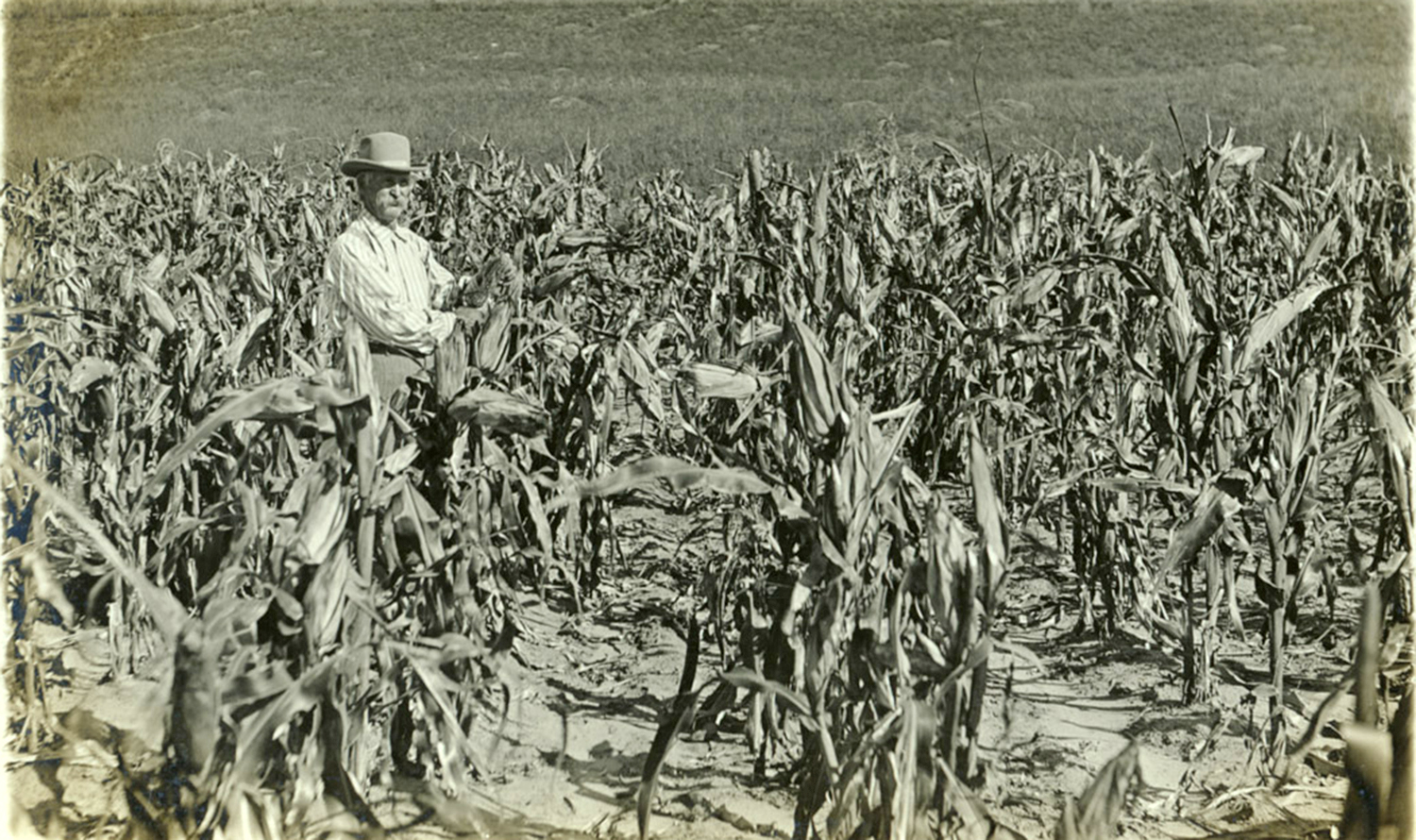 Cornhusking was once considered almost a sport. There were cornhusking contests, and farmers “kept score” on the bushels shucked per acre per day. Most of the crop was harvested in the field and called for extra hired men whose skill sometimes gained them a reputation well beyond their home communities. J. D. Calhoun of the Lincoln Weekly Herald on December 3, 1892, reminisced about his “valuable and romantic experience as a corn shucker.” Calhoun, a former homesteader in Franklin County, recalled that he had “farmed and raised corn, and shucked it, and hired other men to shuck. We once hired one of those 100 bushels [per day] men and at noon he hauled up a consumptive-looking load of stuff—with shucks sticking out of it like feathers on a ruffled pigeon—that might measure but could not weigh out 25 bushels. At night he would come in after dark with the same kind of a yield of his labor. He spent the evening around our hospitable fireside, telling how it was the hardest corn to shuck he ever saw, and how he had knocked out 100 bushels in a day for [neighbor] Dave Plasters the fall before. We let him go and got another man who held the championship belt of Atchison county, Mo. . . . He shucked 60 bushels one day and then laid up for repairs with mutton tallow.” Calhoun continued, “There is another queer thing about the cultivation of corn—the yield per acre. To hear men talk about their crops one would think the average yield to be 75 bushels. We remember once to have had by all odds the finest field of corn in the whole neighborhood for miles around. Nobody guessed it at less than 75 bushels per acre, and an editor made a note of it as promising 90. Everybody agreed that it was as good as had ever been seen in the county. Flushed with honest pride we measured that corn as it came to the crib, and it turned out just 48 l/2 bushels to the acre. And yet there were men in that neighborhood, nice men, real pillars of the church, who sturdily maintained that they hadn’t had an acre in corn that year which yielded less than 60 bushels. We wondered about it very much, but the next year a friend named Phipps explained the mystery.” When the expected yield per acre fell below projections, Phipps merely adjusted downward his total number of acres planted, and said, ‘“This year I sowed 35 acres of oats, but I find that I have only harvested 14. By that means I keep up my average per acre.’” According to the University of Nebraska’s Institute of Agriculture and Natural Resources, in 2016 Nebraska irrigated and rainfed corn yields averaged 199.9 bushels per acre and 147.2 bushels per acre respectively. That’s no tall tale, and today’s farmers are glad they don’t have to shuck all that corn by hand.
Cornhusking was once considered almost a sport. There were cornhusking contests, and farmers “kept score” on the bushels shucked per acre per day. Most of the crop was harvested in the field and called for extra hired men whose skill sometimes gained them a reputation well beyond their home communities. J. D. Calhoun of the Lincoln Weekly Herald on December 3, 1892, reminisced about his “valuable and romantic experience as a corn shucker.” Calhoun, a former homesteader in Franklin County, recalled that he had “farmed and raised corn, and shucked it, and hired other men to shuck. We once hired one of those 100 bushels [per day] men and at noon he hauled up a consumptive-looking load of stuff—with shucks sticking out of it like feathers on a ruffled pigeon—that might measure but could not weigh out 25 bushels. At night he would come in after dark with the same kind of a yield of his labor. He spent the evening around our hospitable fireside, telling how it was the hardest corn to shuck he ever saw, and how he had knocked out 100 bushels in a day for [neighbor] Dave Plasters the fall before. We let him go and got another man who held the championship belt of Atchison county, Mo. . . . He shucked 60 bushels one day and then laid up for repairs with mutton tallow.” Calhoun continued, “There is another queer thing about the cultivation of corn—the yield per acre. To hear men talk about their crops one would think the average yield to be 75 bushels. We remember once to have had by all odds the finest field of corn in the whole neighborhood for miles around. Nobody guessed it at less than 75 bushels per acre, and an editor made a note of it as promising 90. Everybody agreed that it was as good as had ever been seen in the county. Flushed with honest pride we measured that corn as it came to the crib, and it turned out just 48 l/2 bushels to the acre. And yet there were men in that neighborhood, nice men, real pillars of the church, who sturdily maintained that they hadn’t had an acre in corn that year which yielded less than 60 bushels. We wondered about it very much, but the next year a friend named Phipps explained the mystery.” When the expected yield per acre fell below projections, Phipps merely adjusted downward his total number of acres planted, and said, ‘“This year I sowed 35 acres of oats, but I find that I have only harvested 14. By that means I keep up my average per acre.’” According to the University of Nebraska’s Institute of Agriculture and Natural Resources, in 2016 Nebraska irrigated and rainfed corn yields averaged 199.9 bushels per acre and 147.2 bushels per acre respectively. That’s no tall tale, and today’s farmers are glad they don’t have to shuck all that corn by hand.



